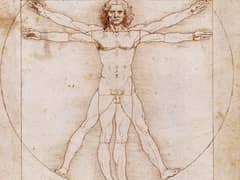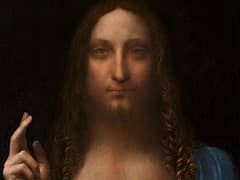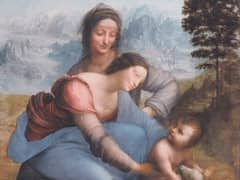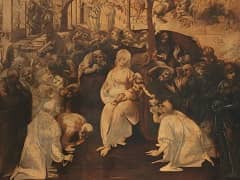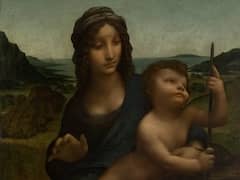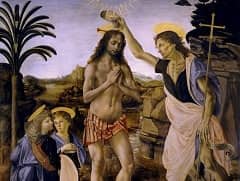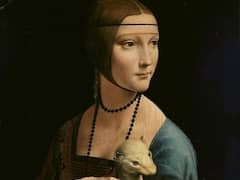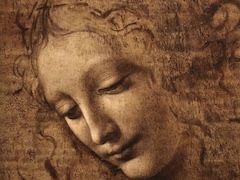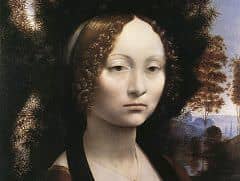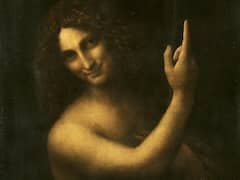The Annunciation - by Leonardo Da Vinci
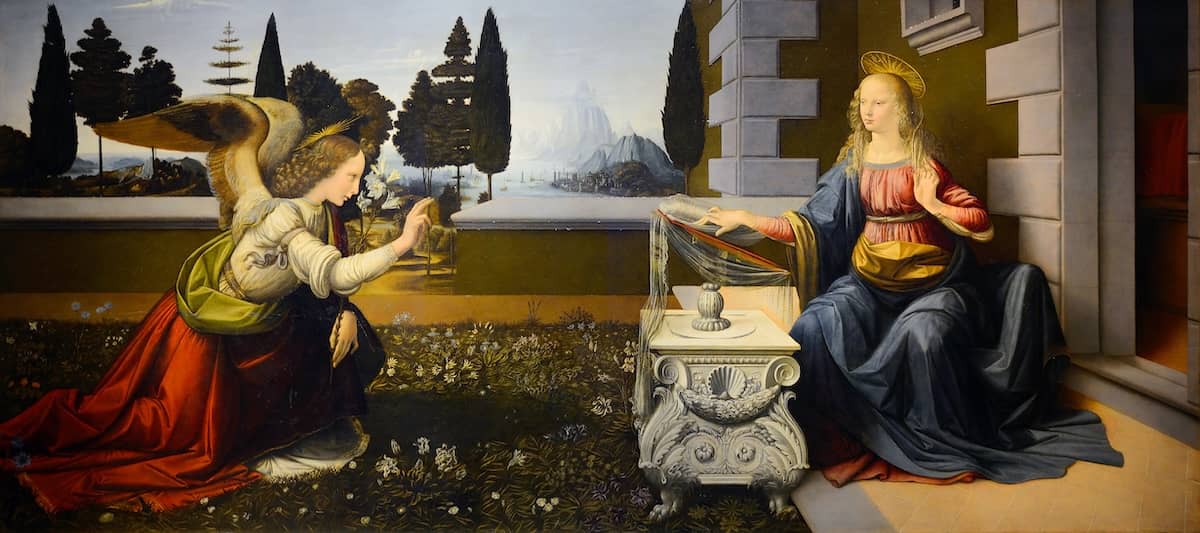
The first work of the twenty-year-old master, The Annunciation is not yet what one would call Leonardesque. The composition follows a centuries-old model with the angel on the left, the Virgin on the right, and a lectern in between; the whole depicted in an architectural setting that opens out onto a landscape. The kneeling angel is magnificently youthful with his high forehead, stylized wings, rich clothing, and lily. The Virgin, surprised while reading, raises her hand in a gesture of astonishment, and displays a fine-featured face which some have described as cold. Her pose, with knees evenly spread and covered with broad and supple drapery, gives her a strong monumental character.
When The Annunciation came to the Uffizi in 1867, from the Olivetan monastery of San Bartolomeo, near Florence, it was ascribed to Domenico Ghirlandaio, who was, like Leonardo, an apprentice in the workshop of Andrea del Verrocchio. In 1869, Karl Eduard von Liphart, the central figure of the German expatriate art colony in Florence, recognized it as a youthful work by Leonardo da Vinci, one of the first attributions of a surviving work to the youthful Leonardo. Since then a preparatory drawing for the angel's sleeve has been recognized and attributed to Leonardo.
Verrocchio used lead-based paint and heavy brush strokes. He left a note for Leonardo to finish the background and the angel. Leonardo used light brush strokes and no lead. When the Annunciation was x-rayed, Verrocchio's work was evident while Leonardo's angel was invisible.
The product of collaborative efforts in Verrocchiio's studio, this picture is nonetheless a masterful achievement and proof of Leonardo da Vinci's innate pictorial talent. Everything in this work is of a high poetic and stylistic quality: the handling of the figures and their attributes, the spatial construction, and the distant trees and watercourse, which attest to the artist's enduring love of nature. Many changes were to come in his painting, for Leonardo da Vinci was a tireless innovator, but this picture would suffice to rank him among the greatest.



